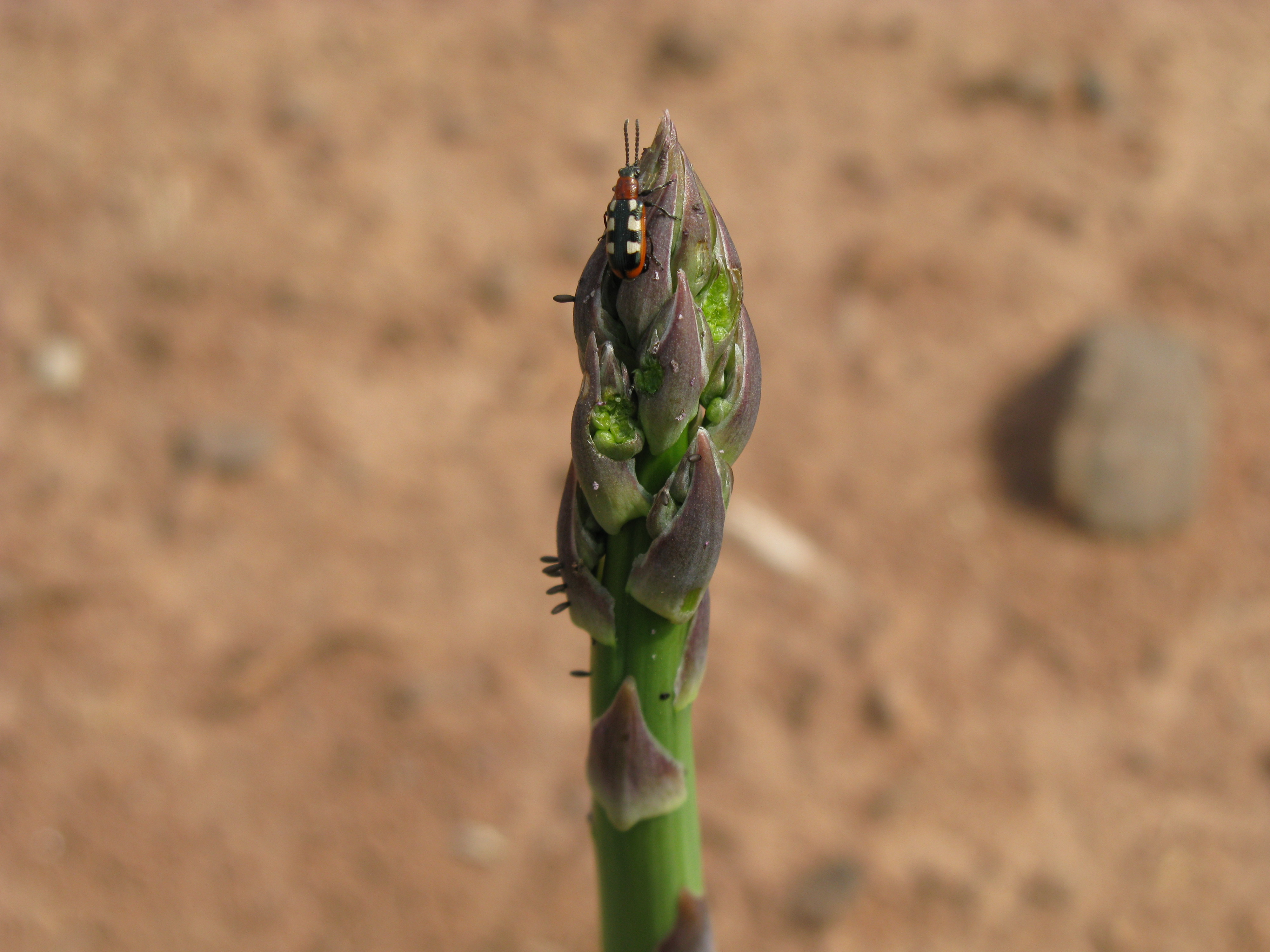Please click here to access the main AHDB website and other sectors.
- Home
- Knowledge library
- Sustainable control methods for asparagus beetle
Sustainable control methods for asparagus beetle
Asparagus beetle is an important pest for many growers. This information will help you to understand how best to control it.
Here we provide information on how the life-cycle impacts your control options, share results from our SCEPTREplus insecticide and bioinsecticide control trials and offer recommendations for integrated pest management strategies.
Life-cycle and when to target
Unsurprisingly, asparagus is the main, and possibly only, host of asparagus beetle in the UK. During the asparagus growing season, there is a risk of spears being contaminated by their eggs.
Feeding damage is not a big problem on harvested asparagus spears because they are removed so soon after the pests emerge. Instead, it is the presence of the eggs, laid in rows on the emerging spears, which compromises crop quality.
Beetles and larvae feed on the asparagus fern, and large infestations can strip and kill the fern, potentially reducing yield in the subsequent year.
To date, the main approach to managing asparagus beetle has been through the use of insecticide sprays. There are theoretically two periods in the cropping cycle that could be targeted:
Targeting adults when spears are emerging to reduce egg-laying
- This requires effective products with a short harvest interval (cypermethrin and natural pyrethroids)
Targeting adults and larvae on the fern
- A longer harvest interval would be acceptable here. This is intended to prevent the pest damaging the growing crop, which would compromise yield in the following year. It may also help to reduce the overall beetle population, particularly as asparagus is likely to be the main source of infestation in the following year
Eggs (on stems) and pupae (in soil and trash) are unlikely to be good targets for insecticides.
Using insecticides and bioinsecticides to control asparagus beetle
SCEPTREplus trials have evaluated most existing and several potential new treatments in laboratory tests using field-collected insects.
The tests showed that most insecticides were more effective against larvae than adults. Pyrethroid cypermethrin achieved very low levels of control of adult beetles. This means it is pointless applying cypermethrin or other pyrethroids to kill adult beetles and to try to prevent them laying eggs, particularly as pyrethroid insecticides are likely to have adverse effects on non-target species, including natural enemies. None of the insecticides tested are likely to kill eggs.
Click on the link below to download the table showing the percentage of larvae and adults killed after six days in SCEPTREplus laboratory trials.
SCEPTREplus laboratory trial results
Natural enemies
Asparagus beetles can be attacked by a range of natural enemies. In the UK, observed predators include spiders and lacewing larvae.
The table in the link below shows the natural enermies found in asparagus crops in the Netherlands (after van Rozen & Huiting, 2016). Known interactions are highlighted.

How do I develop an integrated pest management strategy for asparagus?
It is important to consider developing strategies to manage pests in a way that reduces reliance on chemical pesticides and allows natural enemies to have as much impact as possible.
Recommendations
Plant new crops well away from existing crops. If fern becomes infested, manage infestation as below.
Note – we don’t yet know how far asparagus beetles can fly!
Avoid using pyrethroid insecticides when adults are the main target.
Apply insecticides when the crop is in the fern stage and when larvae predominate, as they are the softer target in terms of being less mobile and more susceptible. This requires regular monitoring of the crop.
We don’t yet know whether we could predict the best times to apply sprays to kill the maximum number of larvae.
This requires regular monitoring of the crop and we don’t yet know the effects of all insecticides on natural enemies.
These could be insecticidal, biological and physical, and we need more alternative control methods.
Did you know?
The beetle spends its entire life very close to the crop, overwintering as an adult in crop debris and other sheltered locations nearby. Both the adults and larvae feed on asparagus spears, and later, when harvesting ceases, on the fern. The beetle overwinters as an adult and is, therefore, ready to move into emerging crops, once temperatures rise and the spears start to emerge.
Topics:
Sectors:
Tags:

